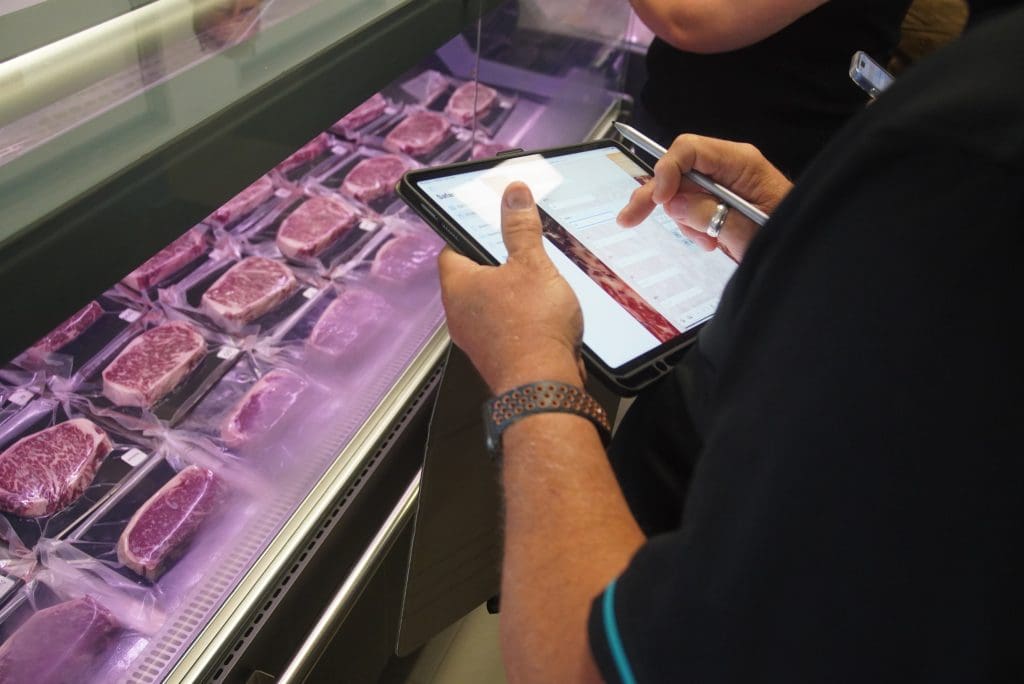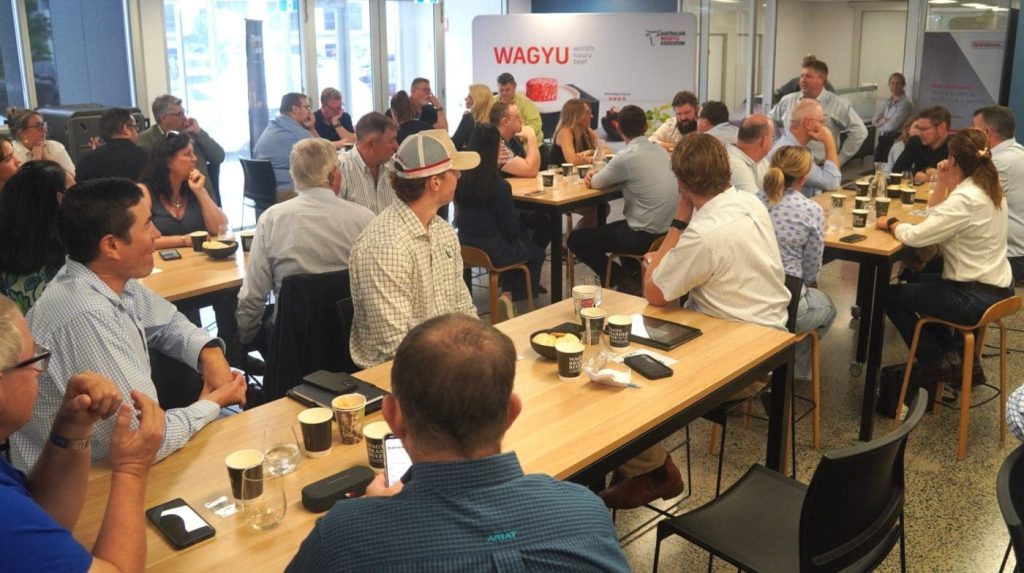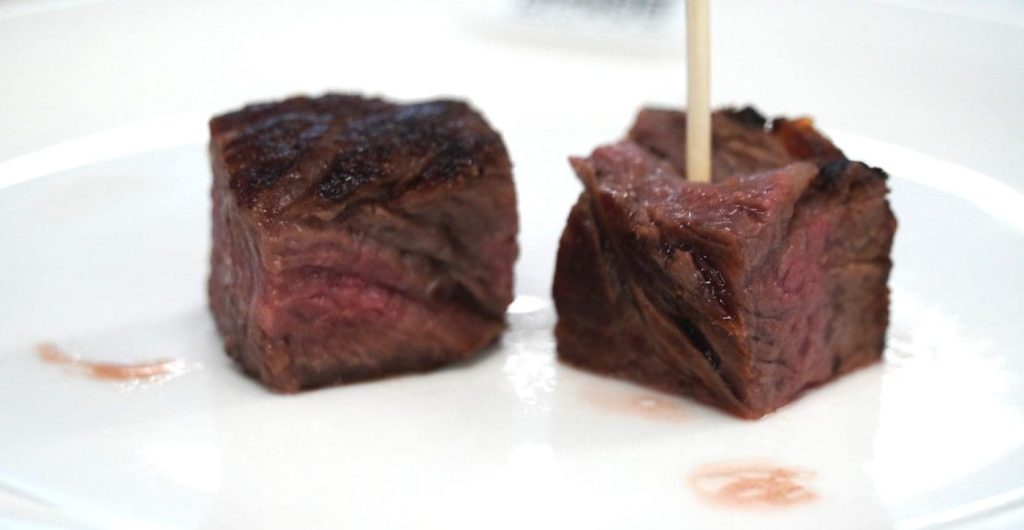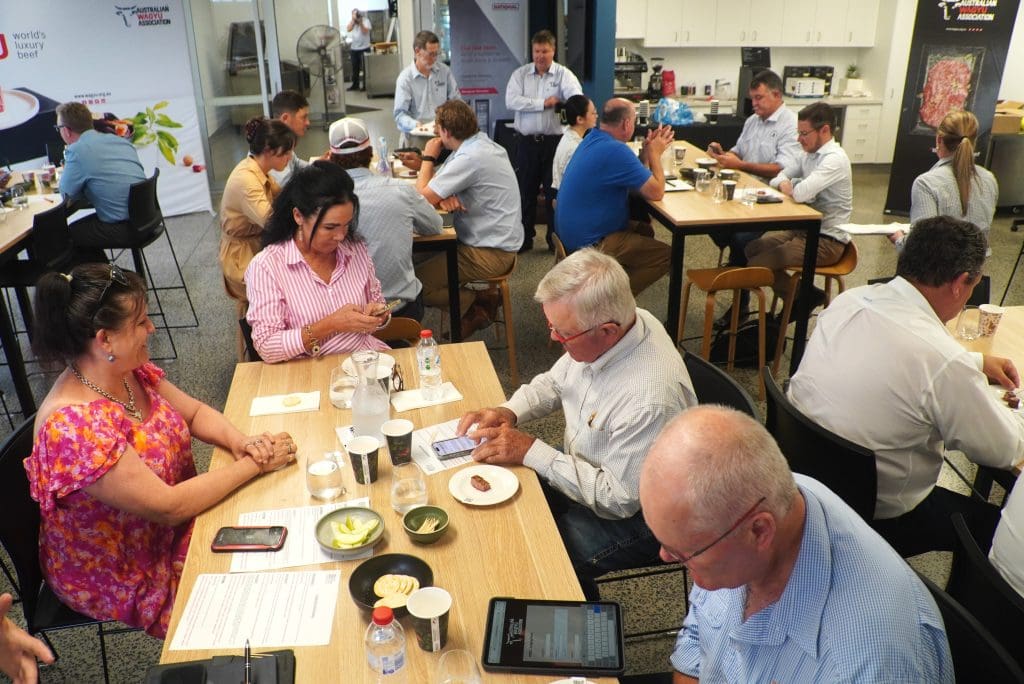
THEY are arguably the most heavily-analysed samples of beef ever seen in a commercial branded beef taste test competition held anywhere in the world.
This year’s Australian Wagyu Association branded beef event, judged in Brisbane over the past two days, attracted a record 91 entries from across the nation – up from 72 last year and almost double the numbers seen just two years ago. Twelve or thirteen years ago, when this correspondent took part in the first annual judging, the competition mustered only 16 samples, illustrating just how the Wagyu sector in Australia has come.
In addition to sensory eating quality analysis of some 900 samples by a team of 68 judges over two days, each entry this year has been poked, prodded, scanned, imaged and laboratory-analysed by an unprecedented array of objective testing technologies to produce hard data to support the sensory judging work.
Head steward Dr Alex Ball said the event now provided one of the best data sets on Wagyu beef performance anywhere in the world. The taste panel component alone, provided more than 3600 data points, with an additional 1500 visual raw assessments as well. That’s before any of the objective measurement work outlined below.

Some of the 36 judges involved in yesterday’s assessment are briefed by head steward Alex Ball
Wagyu beef production is a +$2 billion annual business in Australia today, and with each whole Wagyu striploin entry in this year’s Branded Beef competition worth anywhere up to $2500, the stakes were high. In fact it was calculated that the entire consignment of entries (each a full striploin) in this year’s competition was worth at least $150,000.
Entries were judged in five classes, including Fullblood (100pc Japanese Wagyu genetics), Purebred (F4 and higher), Crossbred, and two classes for F1 carcases marbling scores 5-7, and 8+.
Marbling continues to advance
What was clearly evident this year was the continued progression of Wagyu beef in marbling performance, in both abundance and consistency.
Several entries this year showed an intra-muscular fat percentage (a proxy for marbling, measuring the ratio of fat to red meat within the muscle) of 63 percent, equating to a theoretical marbling grading score of 18 or 19. Only five years ago, the highest ever IMF seen in the competition was 57pc.
“Now days, especially in the Fullblood and purebred classes, if your entry is not in the 60s for IMF, you aren’t competitive,” Dr Ball said. “There are just so many BMS 9+ entries this year, right throughout the competition.”
Another striking feature was the abundance of marbling being produced in F1 and crossbred entries this year, with lots of F1 competitors in the BMS 9 and 9+ range.
This comes despite a general trend towards fewer days on feed among F1 Wagyu cattle in Australia. Whereas 400 days was standard for F1s only four or five years ago, 350-360 days is now common, and one large F1 program now feeds F1s only around 300 days.
Despite fewer days on feed, F1 Wagyu marbling scores continue to advance, as reflected in this year’s competition.
Technology drives assessment
Beyond the tasting room where this year’s judges ranked entries for tenderness, juiciness, flavour, overall liking and raw steak cut appearance, there was a phalanx of analytical equipment in play. None was used as part of the taste test scoring process, but simply to provide hard data on carcase quality performance, covering some 40 traits.

Here’s a summary of the analysis undertaken on this year’s competition entries:
Hand-held near infra-red spectroscopy for fatty acid composition. Hand-held, portable NIR technology developed out of the military and mining industries is still relatively new, but allows users to analyse samples (in this case Wagyu beef, for fatty acid profiles) in real time, rather than waiting weeks for lab results. This is the first year for its use as part of the AWA branded beef taste test.
More thorough fatty acid analysis from all 91 competition entries will come via samples sent for laboratory analysis at Purdue University in the US, looking at the all-important ratios of saturated to unsaturated (desirable) fats, and chemical lean/fat ratios.
“We know that the next dimension in Wagyu eating quality is what we can do with different fatty-acid profiles,” Dr Ball said.
He stressed that the NIR results were not used as part of the competition’s judging/ranking process, but simply to try to work out – particularly at the top end of the Wagyu spectrum – what the new dimensions of Wagyu brand claims might look like.
“There are differences,” he said. “We see them on the grill in different melting points and cooking performance. There are definitely correlations between the judges’ opinions and the NIR scan results, and between the abundance of marbling in a sample and how desirable the fatty-acid profile is,” he said.
Some Wagyu supply chains in Japan already offer premiums for carcases with more desirable fatty acid profiles, and this could one day be a feature seen in Australian brand attributes.
MIJ Camera: Used to objectively measure marbling abundance, distribution and fineness; eye muscle area and meat and fat colour. MIJ is widely used in the Japanese Wagyu industry, and by 60 licensed users worldwide. The camera accurately measures marbling scores well beyond Australia’s 9+ limit, and Japan Meat Grading Association’s marbling threshold of 12. Around 140,000 Australian Wagyu carcases have now been analysed for digital marbling performance using MIJ.
DNA sampling using Neogen’s SNP chip, called Wagyu Feeder Check, providing data on genotype, breed content and parentage.

And the winners are…..
So who were the competition winners? All will be revealed at the 2025 Australian Wagyu Association annual WagyuEdge conference being staged for the first time in Perth, WA between 9-11 April next year.
All that judges have been told at this point was that up to eight entries were still in the running to win the grand championship, once all of the past two days’ taste test data is crunched.
- Click here to read Beef Central’s April report on the 2024 AWA branded beef competition, won for the third time by a Fullblood entry from the de Bruin family’s Mayura Station Wagyu out of Millicent, South Australia.

